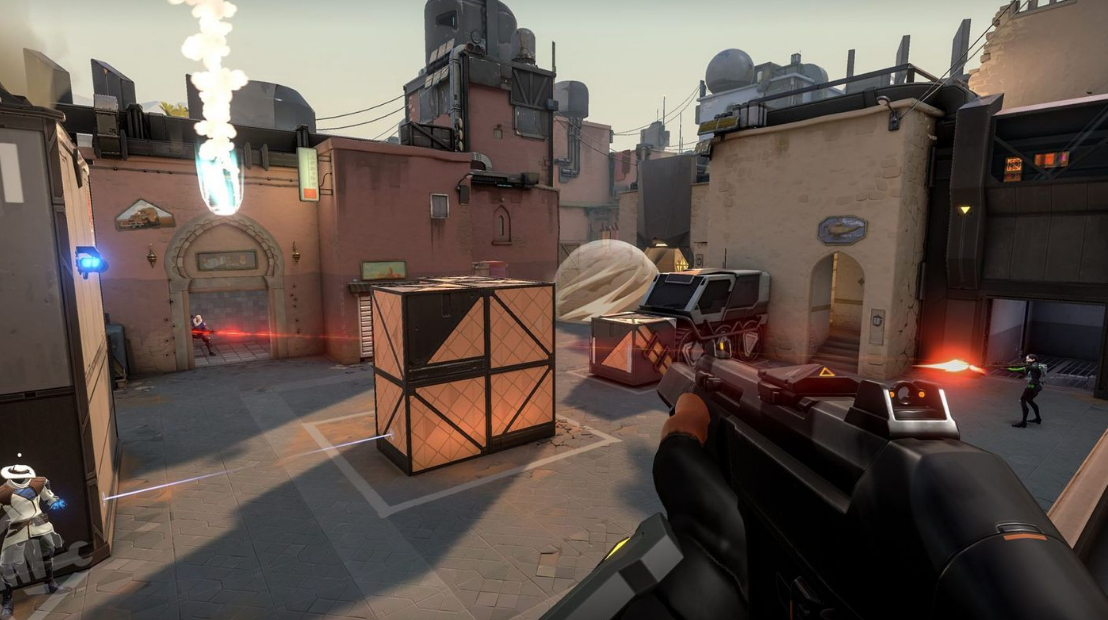
In this article, we will explore the importance of sensitivity settings in first-person shooter (FPS) games, such as the upcoming Counter-Strike 2 (CS2) and the popular game Valorant. Sensitivity settings play a crucial role in determining your gameplay experience, reaction times, and overall performance. We will provide a step-by-step guide on how to convert your CS2 sensitivity settings to Valorant and tips on optimizing settings to maximize your aim and gameplay.
CS2 to Val Sensitivity Recap
To quickly summarize the key points of this article:
- We will explain the sensitivity settings in both Counter-Strike 2 and Valorant, discussing their differences and factors to consider.
- A guide on converting your CS2 sensitivity to Valorant will be provided for maintaining consistent aim and muscle memory across games.
- We will share tips and recommendations for optimizing sensitivity settings in both games to improve your performance.
Understanding Sensitivity in Counter-Strike 2
Sensitivity in Counter-Strike 2 is a setting that determines how quickly your in-game camera moves relative to your mouse input. It plays a crucial role in your ability to aim and react to enemies, making it an essential aspect of FPS games. The ideal sensitivity varies depending on individual player preferences, playstyles, and hardware setups. When considering sensitivity settings in CS2, keep in mind these factors:
- DPI (Dots Per Inch): The DPI of your gaming mouse affects how sensitive it is to movement. A higher DPI results in faster camera movement, while a lower DPI provides more precision.
- In-Game Sensitivity: This setting, found within CS2's options menu, controls how fast the in-game camera moves. Adjusting it in conjunction with your mouse DPI helps fine-tune your aiming precision and speed.
- Resolution & Aspect Ratio: Your monitor's resolution and aspect ratio can impact your sensitivity, as they determine the number of pixels your cursor moves across the screen. Players using different resolutions may require different sensitivity settings for optimal performance.
- Mouse Acceleration: Some players prefer to use mouse acceleration, which increases your sensitivity based on the speed of your mouse movement. This setting can help with faster flick shots but may hinder precision aiming.
Understanding Sensitivity in Valorant
Valorant is another popular FPS game in which sensitivity settings directly impact gameplay and personal performance. While similar to Counter-Strike 2 in many ways, there are some key differences in sensitivity settings to consider:
- Scoped Sensitivity Multiplier: Valorant includes a scoped sensitivity multiplier, allowing you to customize your sensitivity while aiming down sights (ADS). This setting is crucial for players who frequently use scoped weapons.
- Mouse Acceleration: Valorant does not feature built-in mouse acceleration settings like CS2. Players who prefer using acceleration will need to explore external software or adjust their mouse's settings to achieve the desired effect.
Overall, finding the right sensitivity setting in Valorant involves a similar process as in CS2 – considering your mouse DPI, in-game sensitivity, and resolution – but with the additional factor of scoped sensitivity.
Converting Sensitivity from Counter-Strike 2 to Valorant
If you've spent a substantial amount of time playing Counter-Strike 2, it's important to carry over your muscle memory and aiming practice into Valorant. Converting your sensitivity settings between the two games ensures you maintain a consistent aim and performance.
Follow these steps to convert your CS2 sensitivity to Valorant:
- Determine your Counter-Strike 2 sensitivity: Check your CS2 sensitivity settings by navigating to the in-game options menu and finding the sensitivity slider. Note down the value for future reference.
- Calculate your Valorant sensitivity: Multiply your CS2 sensitivity by the conversion factor of 0.318. For example, if your CS2 sensitivity is 2.0, you would multiply 2.0 by 0.318 to get a Valorant sensitivity of 0.636.
- Adjust your Valorant sensitivity: Open the Valorant options menu, navigate to the sensitivity settings, and input your calculated sensitivity value.
Following these steps will help you maintain a consistent aim between the two games and allow you to transition smoothly from Counter-Strike 2 to Valorant.
Tips for Optimizing Sensitivity in Both Games
Every player's preference for sensitivity settings will differ, but there are some general tips and recommendations for optimizing your sensitivity in both Counter-Strike 2 and Valorant. Finding your ideal settings may take some experimenting, but these guidelines should help you get started:
- Test your settings: Spend some time in training modes, such as CS2 Arena servers or Valorant's practice range, to test and adjust your sensitivity settings. Take note of whether your aim feels too slow or too fast and make necessary adjustments.
- Opt for lower sensitivity: Generally, lower sensitivity settings allow for better precision when aiming. Many professional FPS players utilize lower sensitivity for its increased accuracy. However, it's essential to strike a balance that feels comfortable and allows for quick reactions.
- Consider your mouse pad size: Larger mouse pads provide more surface area for your mouse movement, making it easier to handle lower sensitivity settings. If you have limited desk space or a smaller mouse pad, a slightly higher sensitivity may be necessary.
- Use the right mouse DPI settings: Experiment with different DPI settings on your gaming mouse to find a comfortable level that works with your in-game sensitivity settings. Similar to in-game sensitivity, lower DPI values typically result in better precision.
- Disable mouse acceleration: Turning off mouse acceleration in both CS2 and external mouse software can help with consistency, particularly when playing at lower sensitivities. This will ensure that your aim remains precise and unaffected by sudden mouse movements.
- Adjust scoped sensitivity in Valorant: Customize your scoped sensitivity multiplier in Valorant to ensure it is comfortable for your play style. Players who frequently use scoped weapons might want a lower sensitivity for increased accuracy, while those who prefer a fast reaction time might opt for a slightly higher setting.
It's essential to find what works best for you, as your personal preferences and playstyle will ultimately determine the optimal sensitivity settings for your gameplay.
Conclusion
Understanding and converting your sensitivity settings between Counter-Strike 2 and Valorant is essential for maintaining consistent aim and muscle memory across both games. By following the step-by-step guide outlined earlier in this article, you can ensure a smoother transition and keep your skills sharp in both FPS titles.
Furthermore, it is crucial to spend time experimenting and optimizing your sensitivity settings for better-aiming precision and faster reactions. By considering factors such as your mouse DPI, in-game settings, mouse pad size, and personal preferences, you can find the perfect balance that works for you in both Counter-Strike 2 and Valorant.
Begin your journey into these exciting games by browsing the extensive list of server information available on ServerTilt. Whether you're searching for a Counter-Strike 2 server, a fun new CS2 Deathmatch server, or venturing into the world of Valorant, a wealth of gaming opportunities awaits you. With optimized sensitivity settings, you'll be ready to maximize your aim and gameplay in both of these incredible FPS titles.
Published by Jack Gibson on May 24, 2023
Our collection of authors are highly experienced, knowledgeable, and experts on each game & the gaming industry. They have years of experience in the field and know what it takes to be successful gamer. They share their insights & tips on this blog so that readers can learn from their veteran gaming knowledge and get the most out of their gaming experience. Learn more about us and our amazing authors here at ServerTilt.

